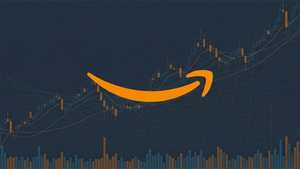
Federal Reserve officials are currently grappling with a significant divergence of opinions regarding the future trajectory of interest rate policy, casting a shadow of uncertainty over financial markets as of late September 2025. This internal debate, highlighted by recent public appearances and the latest "dot plot" projections, reveals a complex policy environment where a weakening job market confronts persistent, albeit elevated, inflation. The discernible split in sentiment among the central bank's key decision-makers is generating considerable market volatility, prompting investors to meticulously re-evaluate their asset allocation strategies and brace for potentially varied outcomes in the coming months.
This policy conundrum stems from conflicting economic signals, with some officials advocating for more aggressive rate cuts to bolster employment, while others champion a more cautious approach, fearing a resurgence of inflationary pressures. The immediate implication for the market is a heightened sense of unpredictability, with bond yields paradoxically rising despite a recent rate cut, and equity investors navigating a landscape where the traditional benefits of monetary easing are being offset by hawkish counterpoints and increased long-term borrowing costs.
Divergent Voices: The Federal Reserve's Policy Path Uncertainty
The recent 0.25% rate cut by the Federal Open Market Committee (FOMC) in September, which brought the federal funds rate to a range of 4.0%-4.25%, initially suggested a move towards easing. However, this decision has done little to mask the underlying disagreements within the Fed regarding the pace and magnitude of future adjustments. A significant portion of Fed officials, representing nearly a third of the dot plot projections, do not foresee any further rate cuts in 2025 beyond the September adjustment. This hawkish contingent, exemplified by comments from Chicago Fed President Austan Goolsbee, emphasizes the need for more conclusive economic data before committing to additional reductions, with some even entertaining the possibility of a rate hike by year-end, viewing the recent cut as a mere "risk management" maneuver.
Conversely, the median expectation reflected in the FOMC's "dot plot" suggests two more quarter-point rate cuts are likely by the end of 2025, which would place the federal funds rate in the 3.5%-3.75% range. This group generally prioritizes addressing the softening labor market through incremental easing. Adding to the complexity, Governor Stephen Miran, the newest member of the Fed's Board of Governors, stands as a vocal outlier. He dissented from the September decision, advocating for a larger half-point cut, arguing that current monetary policy is "very restrictive" and that the appropriate fed funds rate should be closer to the mid-2% area, implying as much as 1.25% in total rate reductions this year. Governor Michelle Bowman has also supported more rapid rate cuts, aligning with a more dovish stance.
Federal Reserve Chair Jerome Powell has consistently highlighted the "challenging" policy environment, acknowledging the conflicting signals of a weakening job market and elevated inflation. Powell has signaled a cautious approach, expressing concerns that cutting rates "too aggressively" could jeopardize the inflation fight, while maintaining rates too high for too long could unduly harm the labor market. The official FOMC statement from September 17 acknowledged rising "downside risks to employment" and persistent "somewhat elevated" inflation. This internal debate, particularly regarding the degree of policy restrictiveness and the impact of tariffs on inflation, has fueled market volatility. Despite the Fed's recent rate cut, Treasury yields have paradoxically risen, indicating a decline in bond prices and suggesting that market participants may be factoring in different expectations, possibly due to renewed inflation concerns or growing apprehension about government debt.
Market Repercussions: Winners and Losers from Fed's Divided Stance
The Federal Reserve's internal policy debate has significant implications for various sectors and public companies, creating a landscape of potential winners and losers. Companies in sectors highly sensitive to interest rate fluctuations will experience the most pronounced effects.
Potential Winners (in a more dovish scenario or with market clarity):
- Technology and Growth Stocks: A clearer path towards lower interest rates, as advocated by the dovish faction, would generally benefit growth-oriented technology companies (e.g., Apple (NASDAQ: AAPL), Microsoft (NASDAQ: MSFT)). Lower discount rates enhance the present value of future earnings, making these stocks more attractive. However, sustained uncertainty or a hawkish shift could temper these gains.
- Real Estate and Housing: Industries like homebuilders (e.g., D.R. Horton (NYSE: DHI)) and Real Estate Investment Trusts (REITs) (e.g., Prologis (NYSE: PLG)) thrive on lower borrowing costs. Reduced mortgage rates stimulate housing demand and make real estate investments more appealing. A dovish pivot would provide a significant boost to this sector, whereas prolonged high rates or uncertainty would continue to be a headwind.
- Companies with High Debt Loads: Businesses that carry substantial debt may see their financing costs decrease if interest rates fall, improving their profitability and cash flow.
Potential Losers (in a more hawkish scenario or with sustained uncertainty):
- Banking Sector: While higher rates can initially boost net interest margins for banks (e.g., JPMorgan Chase (NYSE: JPM), Bank of America (NYSE: BAC)), a volatile and uncertain rate environment can create challenges. Rapid, unexpected rate cuts could compress margins, while prolonged uncertainty can dampen loan demand. Rising bond yields, if not accompanied by a stable economic outlook, can also lead to mark-to-market losses on fixed-income portfolios.
- Utilities and Dividend Stocks: Often considered bond proxies, stable dividend-paying companies (e.g., Duke Energy (NYSE: DUK), NextEra Energy (NYSE: NEE)) can become less attractive if bond yields rise significantly, as investors seek higher returns from safer fixed-income assets.
- Consumer Discretionary: Companies in this sector are heavily reliant on robust consumer spending. A tightening of financial conditions, whether through higher interest rates or general economic uncertainty, could lead to reduced consumer confidence and spending, impacting retailers and other discretionary businesses.
The market's initial reaction, with Treasury yields rising despite a rate cut, suggests that investors are factoring in different expectations than the central bank, leading to a complex environment where traditional responses to monetary policy are being challenged. This necessitates a careful re-evaluation of investment strategies, emphasizing sector rotation and duration management.
Broader Implications: Navigating Economic Headwinds and Policy Shifts
The Federal Reserve's internal policy divergence is not merely a technical debate; it carries profound broader implications for the global financial landscape and economic stability. This event fits into a wider trend of central banks grappling with a post-pandemic economy characterized by persistent inflation and uneven recovery in labor markets. The conflicting signals—a weakening job market alongside elevated inflation (PCE inflation at 3% for 2025, core PCE also at 3.1%, with a slight upward revision for 2026)—underscore the immense challenge faced by policymakers.
The ripple effects of this uncertainty extend beyond U.S. borders. With the European Central Bank (ECB) maintaining a relatively firmer stance on monetary policy, the Fed's lean towards easing, even if gradual, is expected to bolster the Euro against the U.S. Dollar. This divergence in monetary policy could influence trade balances and capital flows, impacting multinational corporations and global investment strategies. Furthermore, the Fed's communication strategy itself faces scrutiny. Clear and consistent messaging is crucial for market stability, and a visibly fractured consensus can undermine confidence, leading to increased volatility and potentially making the Fed's job of guiding expectations more difficult.
Historically, periods of significant internal disagreement within the Fed have often coincided with challenging economic transitions or policy shifts. While not unprecedented, such divergences highlight the complex trade-offs involved in monetary policy. For instance, debates during the early 2000s regarding the appropriate response to the dot-com bust or during various tightening cycles illustrate how differing views on economic indicators and models can lead to varied policy prescriptions. The current debate on the impact of tariffs on inflation, with Governor Miran viewing it as "relatively small changes in some goods prices" versus Chair Powell's cautious monitoring, is a modern example of such economic interpretation differences influencing policy. This situation underscores the fact that monetary policy is as much an art as it is a science, requiring careful judgment amidst imperfect information.
The Road Ahead: Scenarios and Strategic Responses
The path forward for Federal Reserve policy is fraught with possibilities, each carrying distinct implications for the market. In the short term, all eyes will be on upcoming economic data releases, particularly inflation reports (like the Consumer Price Index) and labor market statistics (such as the monthly jobs report), which will heavily influence the rhetoric of Fed officials and subsequent policy decisions. The October FOMC meeting is a critical near-term event, with current market pricing suggesting a 91-92% probability of another 25-basis-point rate cut, implying a federal funds rate of 3.80% by the end of 2025.
Looking further ahead, several scenarios could unfold. A continued softening of the labor market coupled with a more definitive trend of disinflation could embolden the dovish faction, leading to more aggressive rate cuts than currently anticipated by the median dot plot. Conversely, if inflation proves more stubborn or if economic growth unexpectedly reaccelerates, the hawkish voices could gain traction, potentially leading to a pause in cuts or even a reconsideration of hikes. The impact of tariffs and their inflationary pressures will also be a key determinant.
For businesses and investors, strategic pivots and adaptations are paramount. Companies should model various interest rate scenarios to assess their financial resilience, particularly those with significant debt or sensitivity to consumer spending. Market opportunities may emerge in sectors that are currently undervalued due to uncertainty but are poised to benefit from a clearer policy direction. For instance, if the Fed signals a more definitive easing cycle, growth stocks and real estate could see renewed interest. Conversely, if a hawkish stance prevails, defensive sectors and value stocks might offer more stability. Investors should prioritize portfolio diversification and maintain liquidity to navigate potential volatility, closely monitoring not just official Fed statements but also the nuanced speeches and interviews of individual governors and regional presidents for early signals of shifting sentiment.
Navigating Uncertainty: A Comprehensive Market Outlook
The Federal Reserve's current internal debate over its future policy path marks a pivotal moment for financial markets. The key takeaway is the profound uncertainty introduced by this divergence of opinions, requiring investors to adopt a highly adaptive and informed approach. While the September rate cut was a step towards easing, the underlying disagreement regarding the pace and magnitude of future adjustments means that market participants cannot simply assume a straightforward trajectory. The ongoing tension between addressing a weakening job market and combating elevated inflation will continue to be the central challenge for policymakers.
Moving forward, the market will remain acutely sensitive to incoming economic data. Critical indicators such as inflation readings, employment figures, and GDP growth reports will serve as primary catalysts for shifting expectations and, consequently, market movements. Investors should also pay close attention to the nuanced language used by Federal Reserve officials in their speeches and the minutes of FOMC meetings, as these will provide further insights into the evolving consensus—or lack thereof—within the central bank. The implied federal funds rate derived from futures markets will be a crucial barometer of market sentiment regarding the probability and timing of future rate adjustments.
Ultimately, the significance of this period lies in its potential to redefine the investment landscape. A clear resolution of the Fed's policy path, whether towards sustained easing or a more cautious hold, will unlock opportunities and clarify risks. Until then, investors should maintain a disciplined approach, focusing on robust fundamental analysis, prudent risk management, and a willingness to adapt to a dynamic economic and monetary policy environment. The coming months will test the resilience of both markets and central bank communication, making informed vigilance more critical than ever.
This content is intended for informational purposes only and is not financial advice






